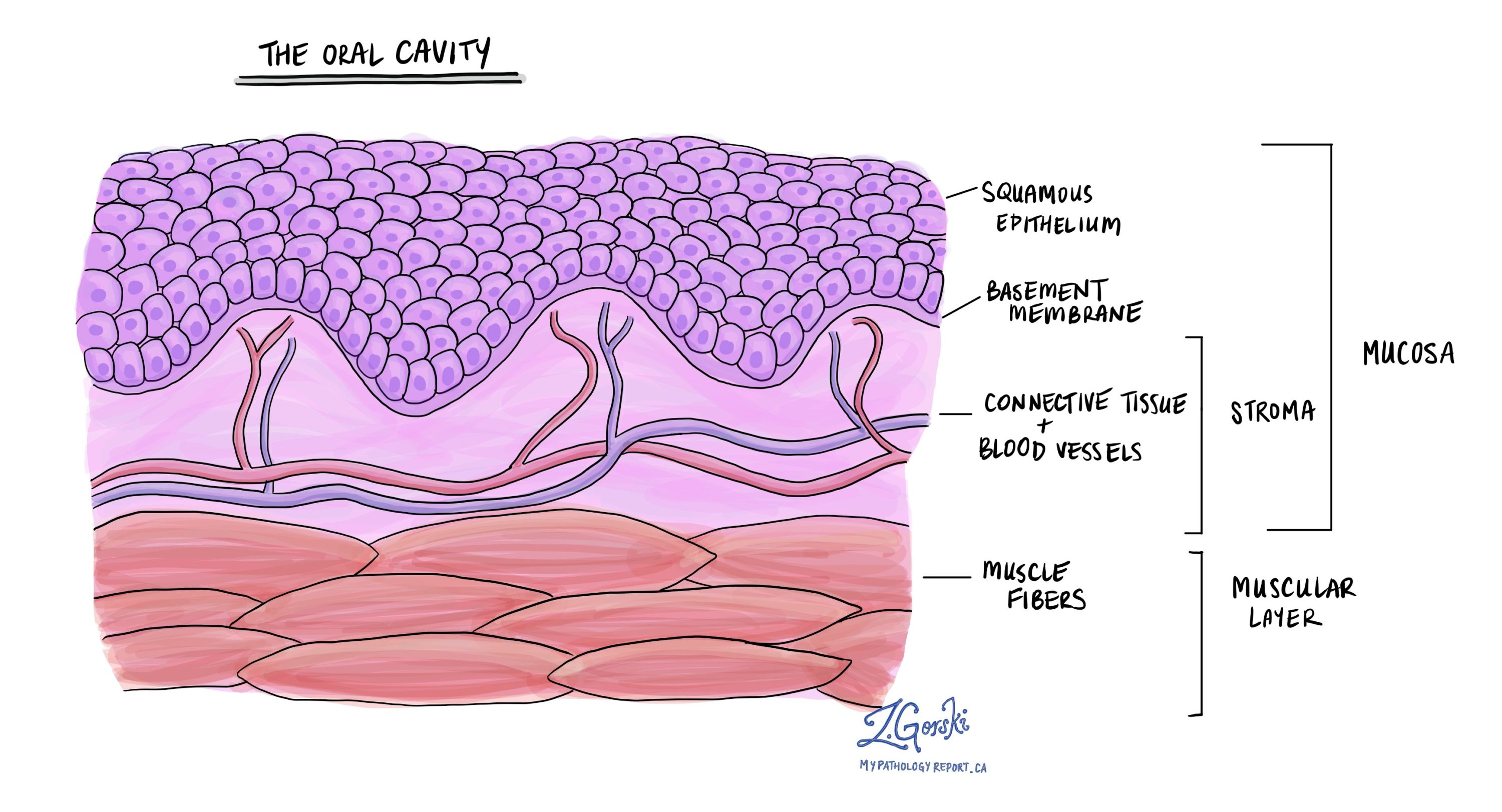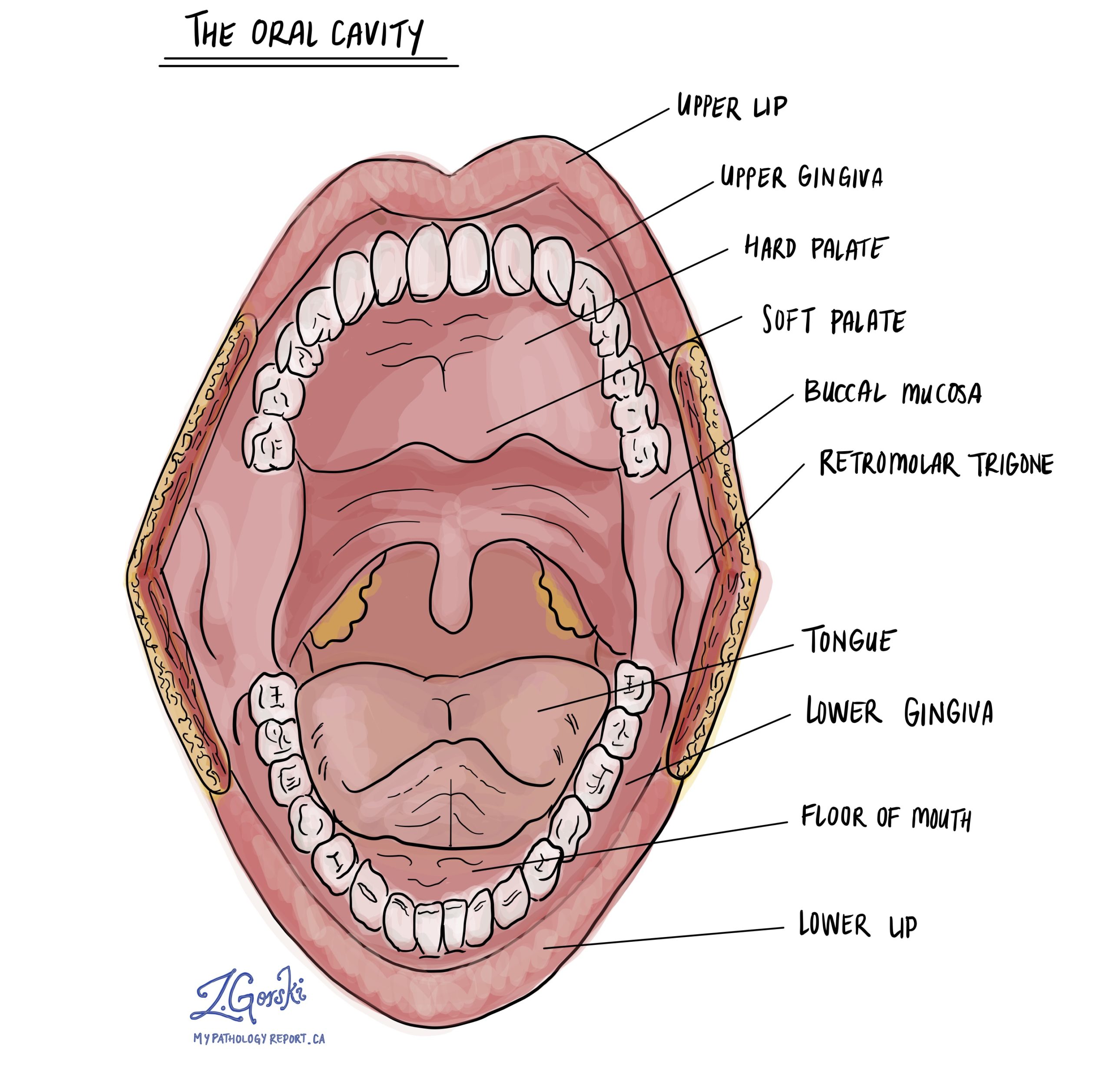The oral cavity is the medical term for the inside of the mouth. It is the first part of the aerodigestive tract, which is the system that carries air to the lungs and food to the digestive system. The oral cavity begins at the lips and ends at the oropharynx, which is the part of the throat located just behind the mouth.
The oral cavity includes several important structures:
-
Lips – the external and internal surfaces of the mouth opening
-
Tongue – the mobile muscle that helps with speech, taste, and swallowing
-
Floor of mouth – the area under the tongue
-
Gingiva (gums) – the tissue surrounding the teeth
-
Buccal mucosa – the inner lining of the cheeks
-
Hard palate – the bony roof of the mouth
-
Retromolar trigone – the area behind the last molars, near the lower jaw and tonsils
What is the oral mucosa?
The inner surface of the oral cavity is lined by a layer of squamous cells, which are flat cells that form a protective barrier called the epithelium. Beneath the epithelium is a layer of supportive tissue called the stroma, which contains blood vessels, connective tissue, and immune cells.
Together, the epithelium and stroma are referred to as the oral mucosa. The oral mucosa protects the mouth from injury, infection, and dehydration, and is the site where many types of oral diseases can begin.

What is the most common type of oral cavity cancer?
The most common type of cancer in the oral cavity is squamous cell carcinoma. This cancer starts in the squamous cells of the oral mucosa. It can occur anywhere in the oral cavity but is most often found on the tongue, floor of mouth, or buccal mucosa.
Squamous cell carcinoma of the oral cavity is often associated with tobacco use, alcohol consumption, poor oral hygiene, or long-term irritation. Early detection is important, as treatment is more effective before the cancer spreads to nearby tissues or lymph nodes.
What is the most common non-cancerous tumour in the oral cavity?
The most common non-cancerous (benign) tumour in the oral cavity is called a fibroma. This is a firm, smooth growth that usually develops in response to repeated trauma, such as accidentally biting the cheek or tongue. Fibromas are not cancerous and do not spread, but they may be removed if they cause discomfort or interfere with eating or speaking.
Another common non-cancerous tumour in the oral cavity is the squamous papilloma. This growth is caused by a human papillomavirus (HPV) infection and appears as a small, wart-like bump. Like fibromas, squamous papillomas are benign and can usually be removed with a minor procedure.
Questions to ask your doctor
-
What part of the oral cavity is affected in my case?
-
Is the condition benign or cancerous?
-
What treatment options are available?
-
Is there a risk the condition could spread or come back?
-
Do I need any follow-up visits or monitoring?




